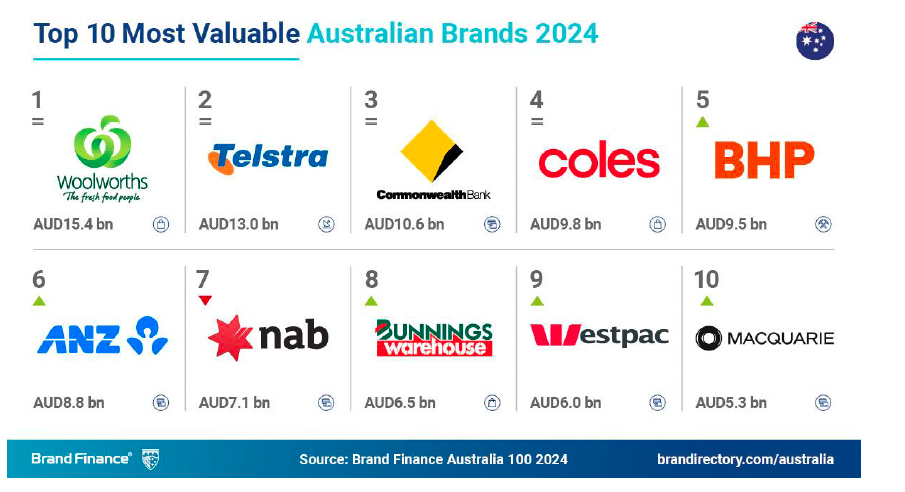Anchorage Partners bets on data strategy to make outsized return from David Jones, rewrite M&A valuations

When we went through the sale about three years ago, and during that time, as part of their due diligence, our new owners looked at where there is untapped value… Data was one of those areas.
When Anchorage Capital bought David Jones in 2022, it wasn’t chasing chandeliers or flagship leases. The real prize lay in the data, a hidden asset buried beneath decades of trading.
“We went through a sale about three years ago, and during that time, as part of their due diligence, our new owners looked at where there was untapped value. They wanted to identify areas within the business that might be underperforming but could be invested in—areas with strong growth potential. Data was one of those areas,” says Shalome Stone, Product Manager for Data and AI.
The PE firm saw what previous owners missed: the business wasn’t just short on shoppers; it was short on signal. Beneath every transaction, wishlist and return sat wasted patterns while a 186‑year‑old brand risked fading into history.
That’s not to say they ditched the tried and tested PE playbook: It’s cut staff, downsized the store portfolio, and streamlined operations. But Anchorage also backed a different thesis: build value by simplifying, federating, and harnessing the information the business already had. That decision has defined the retailer’s transformation.
What followed was a subtle rewiring of strategy. To compete in modern retail, the store’s heritage appeal would no longer suffice. Stone and Sai Namuduri, David Jones’ Manager for Data and AI Platforms, were tasked with building a new data business function built upon a hybrid model straddling technology and commerce.
“There was also a very clear decision to make it a collaborative combination of business and technology,” Stone explains. “It wasn’t just about data for data’s sake, and it wasn’t just about getting our data clean and structured.”
instead it was to create a retailer run on insight over instinct.
Rethinking ROI
The first challenge was philosophical. Boards and executives tend to treat data like any other asset: it must justify its existence in dollars. David Jones’ team resisted that framing.
“When we set up our business function, we were very clear that our intent really was about enablement,” says Stone. “Data is in this assumed enabler bucket; a lot of effort and activity goes into getting it right, but it doesn’t have a standalone ROI.”
This ran against decades of retail orthodoxy. Convincing senior leaders to invest millions in something that would not produce an immediate payback demanded a shift in thinking. Rather than promise direct returns, Stone and Namuduri reframed the value equation: data would enable growth by making every other investment work harder.
Four levers anchored their pitch:
-
Speed: Clean data shortens time-to-value. Weeks of manual reconciliation collapse into minutes.
-
Reusability: Captured once, data can underpin multiple use cases — from loyalty personalisation to retail media monetisation.
-
Risk: Good governance avoids costly breaches and reputational damage.
-
Efficiency: Fewer tools, less technical debt, lower maintenance bills.
The payoff would come, just not where the accountants were used to looking. This reframing is gradually taking root as a data infrastructure is filled out, and capabilities extend out to the management edge:
The conversation is shifting, says Stone, with more executives leaning in and asking, ‘Could we just do that in [cloud-based data platform] Snowflake?’ They don’t always know exactly what Snowflake does, but they’ve recognised its potential.”
Foundations first
Every retailer wants to talk about AI. David Jones’ leadership resisted the immediate sugar hit for a more sustainable banquet. Before intelligence comes infrastructure – where “simplicity is everything,” says Namuduri.
The company inherited a sprawl of legacy reporting tools and AWS-based data lakes – costly, complex, and unsuited to modern workloads. Disconnected dashboards meant merchandisers, marketers, and ecommerce managers often worked from different “truths,” making cross-channel optimisation almost impossible, risking deepening silos.
Namuduri’s solution was radical simplification: migrate to Snowflake, collapse seven reporting tools into one analytics environment, and pair it with Sigma for business-friendly exploration. At a stroke, philosophically at least, the retailer swapped technical debt for technical leverage.
This was slow, unglamorous work. But there was no alternative.
“We didn’t necessarily have the data in the state that it needed to be to underpin our transformation agenda,” Stone explains, saying there was an understanding that the firm had to get its data clean, trusted, accurate.
A retailer can outsource AI; it cannot outsource trust. High-quality, interoperable, and well‑governed data has to become David Jones’ real moat.
The avalanche effect
Technology alone would not make David Jones more intelligent; people would. So Stone and Namuduri built what they call an internal “Insights Avalanche.” It’s a distributed network of analysts, domain specialists, and data-literate business partners across merchandising, marketing, and operations.
“There was an abundance of knowledge within the business,” says Stone. “We recognised that if we were able to tap into, connect, and harness those individuals, they would really help us make informed, prioritised recommendations.”
The Avalanche functions as both sounding board and amplifier. Frontline teams flag blind spots in dashboards; data experts surface opportunities leadership cannot see. Feedback travels faster, decisions become sharper, and proposed data products are grounded in operational reality.
“It’s very much intended to be an intentionally collaborative dialogue,” Stone explains. They come to us; we learn from them. They learn from us, she says.
In a sector where competitive advantage increasingly rests on distributed intelligence, this cultural rewiring may prove as important as the platform shift itself. Perhaps more so.
Two at the top
David Jones’ transformation runs on a partnership model. Stone drives business strategy and customer outcomes; Namuduri engineers the platforms that enable them. Co-leadership avoids the common failure mode where IT and commerce operate on different timelines.
Supporting them is a cadre of data business partners, hybrid translators who move between SQL queries and merchandising priorities with equal fluency.
“We wanted to move away from it just being a technology function and really straddle the business as well,” says Stone. “So we set up roles for those folks that can talk in data language, but really get into the nitty-gritty of understanding the challenges within the business.”
The effect is cultural alignment – not always the case within retail: marketers, merchandisers, and engineers sit at the same table, optimising for the same metrics.
Luxury meets autonomy
With foundations solid, the company is cautiously exploring agentic AI, autonomous systems capable of analysing patterns, generating offers, and taking action without human input. For a luxury retailer, the stakes are higher: every automation must uphold the brand promise.
“I think we’re right at the precipice,” Stone reflects. “We will absolutely not proceed if we aren’t able to ensure that we are maintaining our commitment to our customers and to our brand.”
David Jones is clear: aspiration comes first, automation second.
“It’s not technology for technology’s sake,” Stone insists. “It’s about bringing that luxury element to things. Even if it takes us a little longer or a little more investment, we want to bring a richer, elevated experience to life.”
Done right, AI could give David Jones a timeless advantage: stitching together curated, consistent experiences across channels while preserving the human layer its customers expect.
Where next
The roadmap is ambitious: unified identity resolution, likely a composable CDP built inside Snowflake, and predictive models for personalisation. But the philosophy remains constant: fewer tools, cleaner data, stronger guardrails.
“Bringing the AI to the data, not the other way around,” says Namuduri.
Anchorage bet that department-store retail could be reinvented around intelligence rather than just inventory. That thesis is now being tested, not in the soft furnishings, but in the data fabric beneath them.
Success is far from guaranteed. But if the bet pays off, it will suggest something larger: that even legacy institutions, if sufficiently focussed and ambitious about data, can turn heritage into a competitive edge.
And for Anchorage, which paid around $100m for the business – less than a decade after Woolworths Holdings paid $2.1bn – the returns may be outsized.





